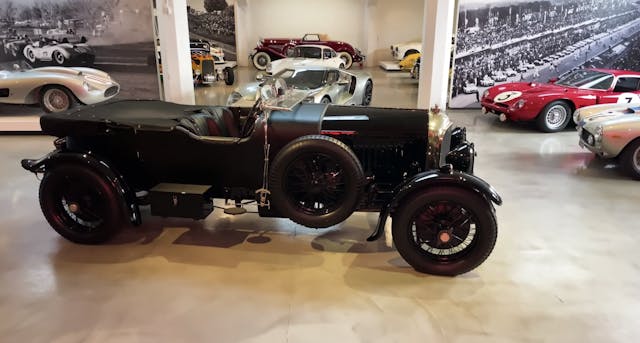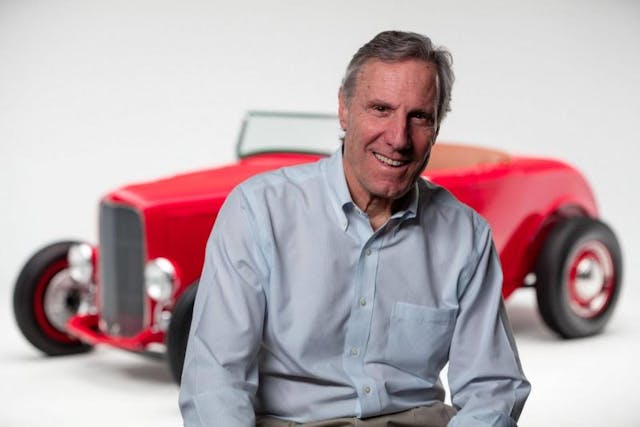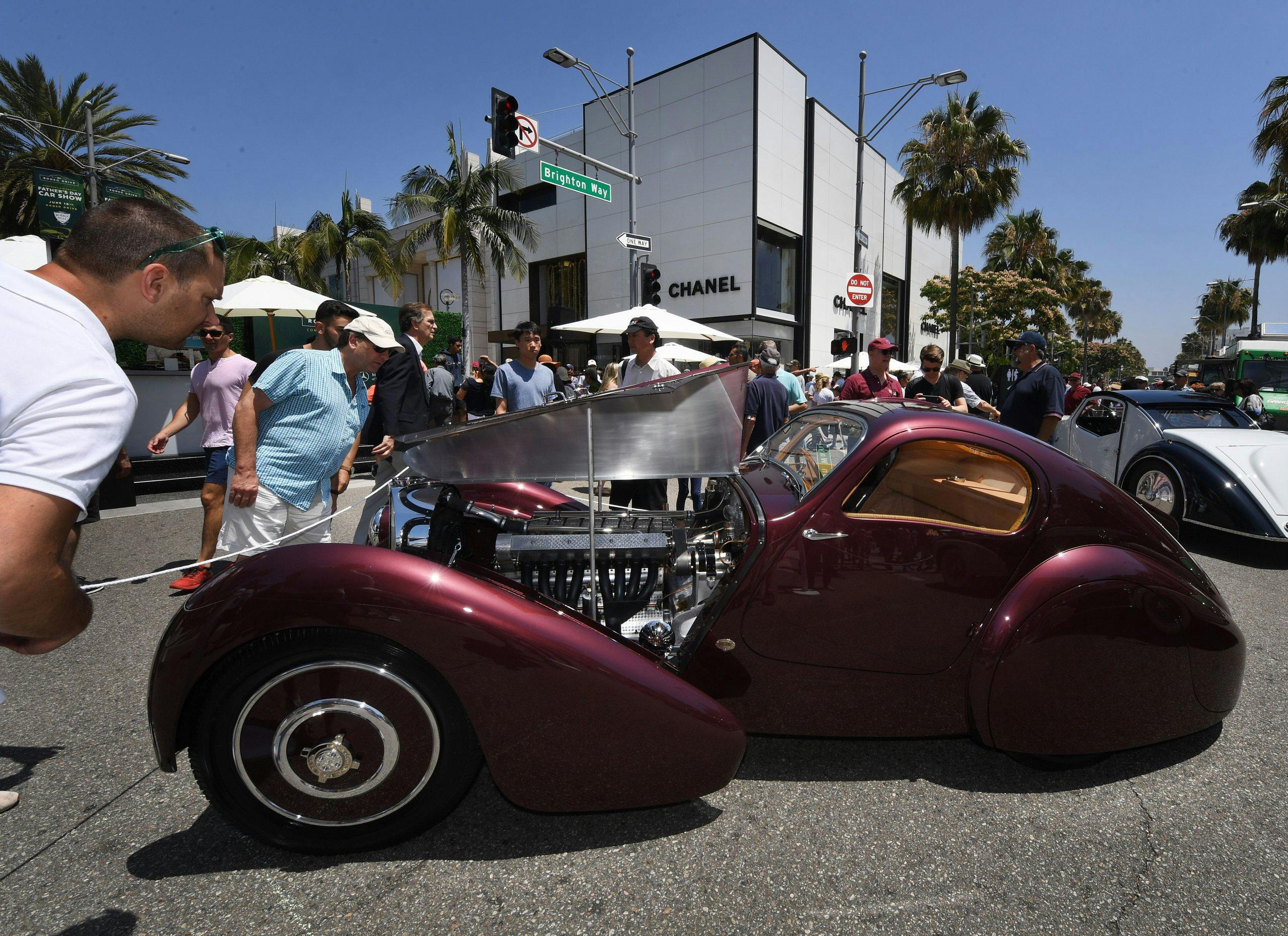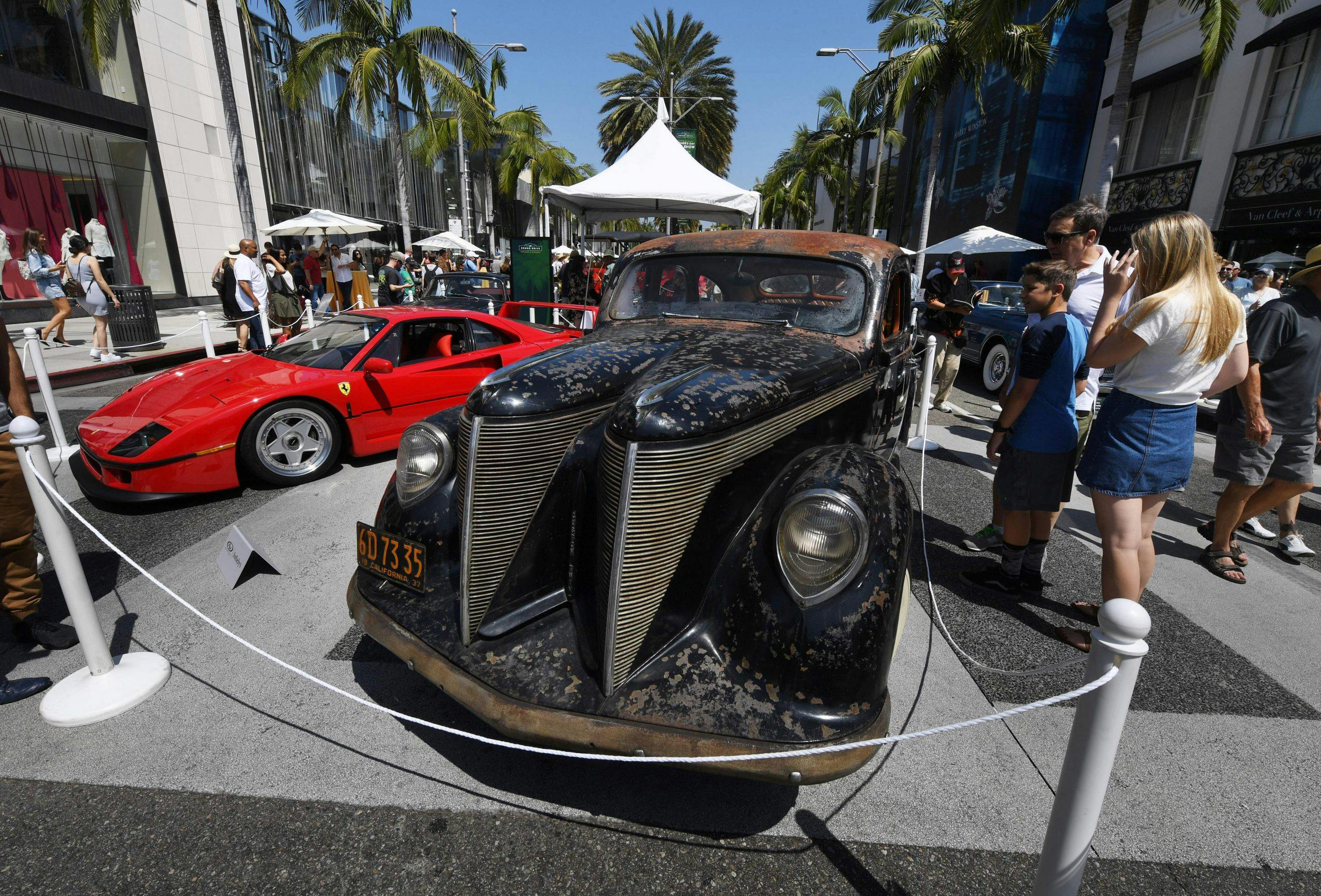Bruce Meyer: The “car guy’s car guy” turns 80

When Bruce Meyer turned 60, he bought himself the Ferrari 250 GT SWB that won its class at Le Mans in 1961. When he turned 70, he transformed a second-story retail space a stone’s throw of Rodeo Drive into an elegant private garage/museum for his impeccable car collection. Now that he’s about to turn 80, he’s not bothering with a birthday present. What, after all, could the man who’s got everything possibly need?
“People ask me, ‘What are you looking for?’ Nothing,” says Meyer, founding chairman of the Petersen Automotive Museum and an eminence grise in the collector car community. “I’ve never been one to believe that he with the most toys wins. I don’t have that many cars, and I’ve never desired to have that many more. I just pinch myself that I have TWO cars.”

Handsome and well-preserved, dressed in jeans and a crisp button-down shirt, Meyer saunters past his greatest hits: the stunning silver 250 625/250 TRC said to be the winningest Ferrari ever built; the Porsche 935 K3 that the Whittington brothers drove to victory at Le Mans in 1979 after buying it on the spot—in cash—with drug money; the virtually unbeatable Greer-Black-Prudhomme slingshot dragster; the first production Cobra; a majestic two-tone Bugatti Type 57; a wall full of motorcycles; even a wood hydroplane packing the supercharged Miller marine engine that served as the foundation of the Offy. And that’s just scratching the surface.

But Meyer will be remembered less for the cars he’s amassed than the pioneering role he’s played in the industry, from helping get the Petersen Museum off the ground to convincing people to treat hot rods like legitimate collectibles. “He’s the car guy’s car guy,” says Los Angeles collector and fellow Petersen board member David Sydorick.
Meyer lives his life according to his personal motto—never lift—motoring from car shows to auctions to road rallies with boundless enthusiasm. His infectious passion has made him an immensely influential figure in the hobby, while his winning personality has allowed him to befriend everybody from CEOs to fabricators, motorsports legends to the fans who flock to the Rodeo Drive Concours d’Elegance, which, yes, he cofounded.
“I was with him at the Geneva Auto Show one year, and he was stopped every five feet by somebody wanting to talk to him. It was like going to a rock concert with Mick Jagger,” says Terry L. Karges, executive director of the Petersen Museum. “Everybody knows Bruce, and he knows where all the cars are. If you’re a major collector and you’re looking for a particular car, you call Bruce. If you’re looking to sell a particular car, you call Bruce.”
Meyer has always been a go-getter, whether hawking newspapers as a kid or selling mail-order candles during his hippie days or helping run the family business in Beverly Hills—Gearys, a purveyor of luxury goods. He’s also earned a substantial fortune in real estate.
Growing up across the street from ArtCenter and its celebrated transportation design department, he was programmed almost from birth to love cars. He persuaded his father to help him buy his first car, a Porsche 356, by convincing him that the 60-horsepower flat-four meant it was safer than the Chevy Biscayne he’d originally planned to buy.
A few years later, he was at Otto Zipper’s Porsche dealership when he saw a yellow apparition drive in—a four-cam Ferrari 275 GTB painted Giallo Fly. “It was like a young kid seeing his first Countach,” he recalls. “I thought, ‘God, this is the most beautiful car I’ve ever seen!’
I just couldn’t take my eyes off it. Three years later, I bought it for $10,750, which was about $700 over market. It was not only my daily driver. It was my entire net worth.”
The 275 became the cornerstone of Meyer’s collection—except that he doesn’t call it a collection. “If you’re going to have a collection, you’ve got to start with a vision: You’re going to collect Jaguars or cars with fins or Rolls-Royces,” he explains. “I’ve never had a vision. I’ve bought what I liked when I liked it, and I’ve never bought anything because I wanted to make money on it. I’m not a price buyer. I’ve probably overpaid for everything I’ve ever bought. But I always say, ‘Buy the best, and cry only once.’”

Meyer has gone through various phases over the years, and his focus has shifted from motorcycles to pre-war classics to post-war performance cars with an emphasis on ones that raced at Le Mans. (He’s got seven.) But he’s especially renowned for his hot rods, which include the Bob McGee and Doane Spencer roadsters—the Rosetta Stone and Holy Grail of hot rodding—as well as the Pierson Brothers coupe and SO-CAL Speed Shop belly tank Bonneville racers.
“My biggest contribution to mankind—well, autokind—is getting recognition for hot rods,” he says. “Dan Gurney was a hot-rodder. Phil Remington was a hot-rodder. Bob Bondurant and Parnelli Jones both had ’32s. Carroll Shelby’s entire shop started with hot-rodders. My mission was to get people to understand how important hot-rodding was to automotive history.”

Meyer hounded the powers that be at the Pebble Beach Concours d’Elegance for 10 years to create a class for hot rods. And as Karges says, “You don’t say, ‘No,’ to Bruce Meyer. He’s a force of nature.” Sure enough, hot rods were finally showcased on the lawn at Pebble Beach in 1997—naturally, Meyer won the class with his Doane Spencer hi-boy—and they’re now found in many of the most rarified collections in the world.
Meyer drives most of his cars on the street, even when they aren’t strictly street legal. Fittingly, his daily driver is a mild custom—a Chevy Suburban bought new in 1996, then lowered and smoothed out by the SO-CAL crew. “My family hated it for a long time,” he says. “But I think they’re finally getting it because, with [the Eighties-oriented car shows like Motor Vice], my Suburban is now so hip.”
Even as he turns 80, Meyer is still ahead of the curve.





Excellent I always wanted to meet him also😄
Great article. I was introduced to Bruce a few weeks ago. At the time I really did not know who he was. I asked him if he was the Bruce Meyers Manx dune buggy guy. He said no, that’s Meyers with an S. Although he was friends with him. Bruce is a really cool guy and one thousand percent car extraordinaire. Thank you so much for putting this article together. Great job